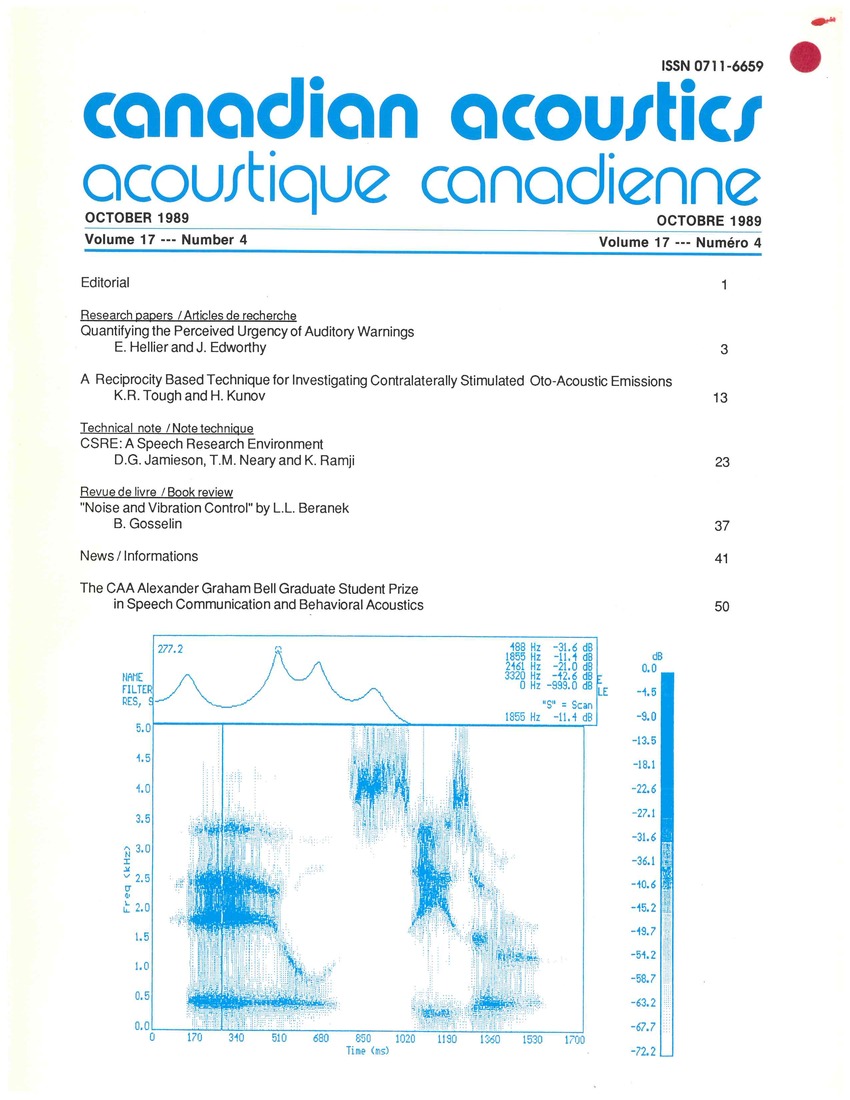Quantifying the perceived urgency of auditory warnings
Keywords:
hearing, psychology, warning length, repetition number, spectral parameters, perceived urgency, auditory warnings, subjective response, temporal parameters, warning speed, Steven's Power LawAbstract
Advanced auditory warning design based on Patterson's guidelines (1982) allows a degree of matching between a warning sound itself and the subjective response it elicits. One important parameter along which a warning and the subjective response can be matched is that of perceived urgency. In order to do this matching successfully, it is important to know the nature and the power of the effects of many spectral and temporal parameters. Three experiments are reported in which the effects of many spectral and temporal parameters. Three experiments are reported in which the effects of number of repetitions, warning speed and length upon perceived urgency were investigated. Results show that increases in all three parameters individually increased the perceived urgency of the stimulus. A fourth experiment tested a set of stimuli which varied in both number of repetitions and speed, whilst the length was held constant. This showed that large differences in the perceived urgency of a warning can be achieved over a fixed period of time. Steven's Power Law (1957) was applied to the data, enabling the power of the relationship between the objective value of the stimuli (number of repetitions, speed or length) and the subjective values of the warnings (the perceived urgency) to be quantifiedAdditional Files
Published
How to Cite
Issue
Section
License
Author Licensing Addendum
This Licensing Addendum ("Addendum") is entered into between the undersigned Author(s) and Canadian Acoustics journal published by the Canadian Acoustical Association (hereinafter referred to as the "Publisher"). The Author(s) and the Publisher agree as follows:
-
Retained Rights: The Author(s) retain(s) the following rights:
- The right to reproduce, distribute, and publicly display the Work on the Author's personal website or the website of the Author's institution.
- The right to use the Work in the Author's teaching activities and presentations.
- The right to include the Work in a compilation for the Author's personal use, not for sale.
-
Grant of License: The Author(s) grant(s) to the Publisher a worldwide exclusive license to publish, reproduce, distribute, and display the Work in Canadian Acoustics and any other formats and media deemed appropriate by the Publisher.
-
Attribution: The Publisher agrees to include proper attribution to the Author(s) in all publications and reproductions of the Work.
-
No Conflict: This Addendum is intended to be in harmony with, and not in conflict with, the terms and conditions of the original agreement entered into between the Author(s) and the Publisher.
-
Copyright Clause: Copyright on articles is held by the Author(s). The corresponding Author has the right to grant on behalf of all Authors and does grant on behalf of all Authors, a worldwide exclusive license to the Publisher and its licensees in perpetuity, in all forms, formats, and media (whether known now or created in the future), including but not limited to the rights to publish, reproduce, distribute, display, store, translate, create adaptations, reprints, include within collections, and create summaries, extracts, and/or abstracts of the Contribution.


